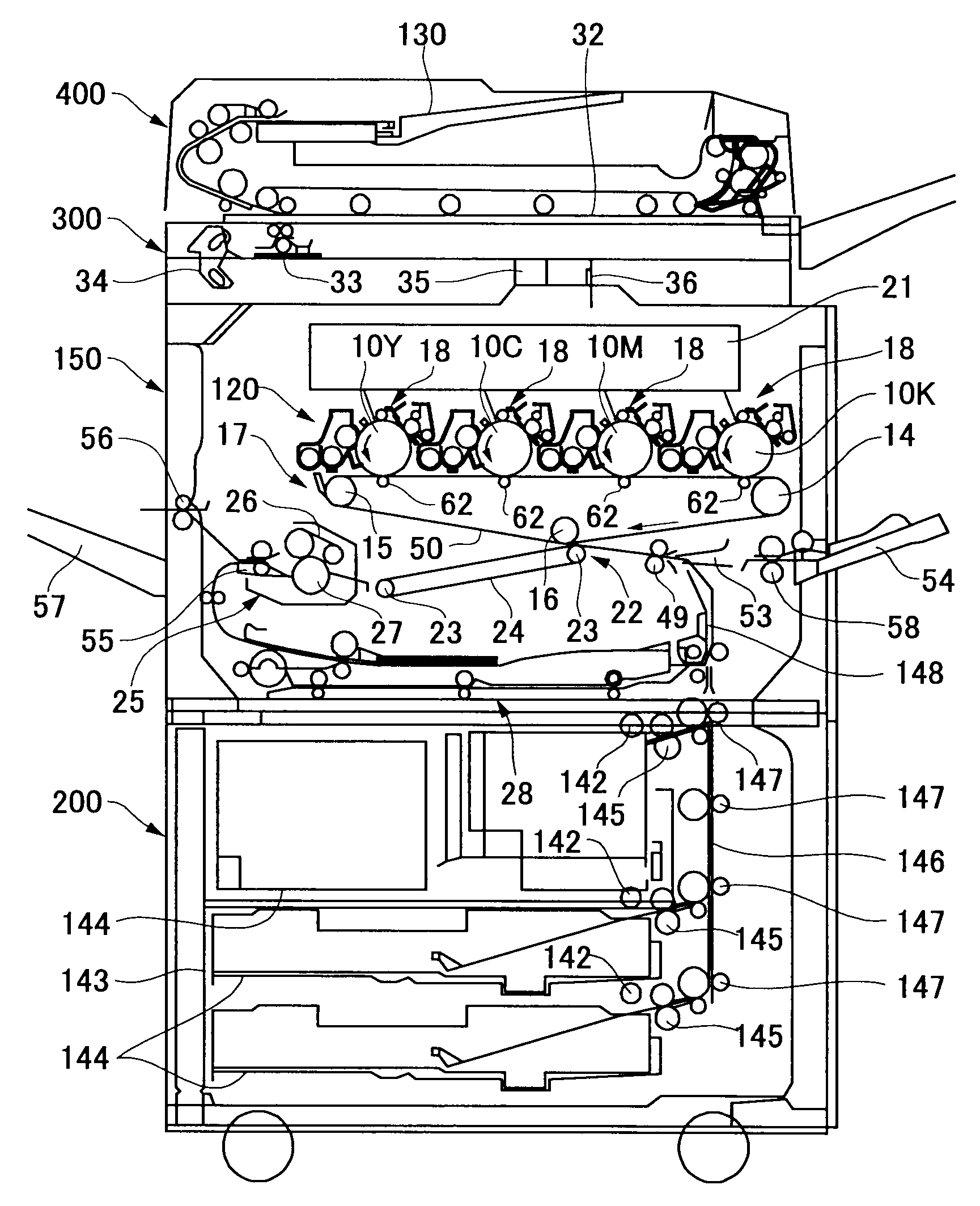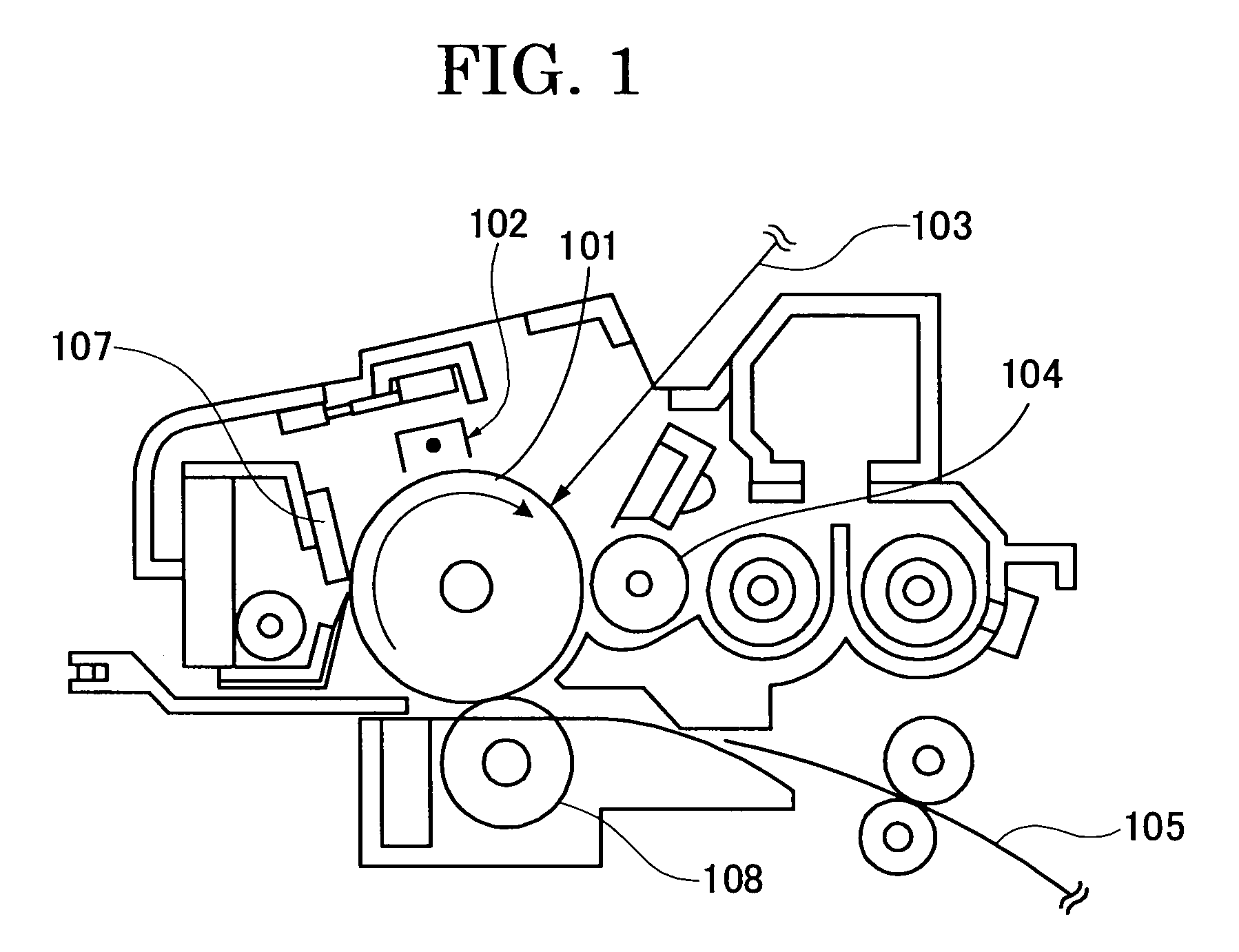Toner, developer, and image forming method
a technology of toner and developer, applied in the field of toner, developer, image forming method, can solve the problems of low yield, difficult uniform dispersibility of colorants and charge controlling agents, and the like in thermoplastic resins, and achieve the effect of satisfying both fixability and storage stability
- Summary
- Abstract
- Description
- Claims
- Application Information
AI Technical Summary
Benefits of technology
Problems solved by technology
Method used
Image
Examples
examples
[0287]The present invention will be explained more specifically with reference to Examples. However, the scope of the present invention is not limited to the following Examples.
[0288]In the following Examples and Comparative Examples, the measurements of weight-average molecular weight of a polyester resin, content rate of the isocyanate group (NCO %), acid value, hydroxyl group value, and glass transition temperature (Tg) were carried out as follows.
[0289]The weight-average molecular weight of polyester resin was measured by gel permeation chromatography (GPC) under the following conditions.
[0290]Instrument: GPC-150C (manufactured by Waters Corp.)
[0291]Column: KF801 to 807 (trademark, manufactured by Shodex)
[0292]Temperature: 40° C.
[0293]Solvent: tetrahydrofuran (THF)
[0294]Flow rate: 1.0 mL / min
[0295]Sample: 0.1 ml of sample solution with a concentration of 0.05 to 0.6%
[0296]Based on the molecular weight distribution of the polyester resin measured under the above conditions, a mole...
synthesis examples 1 to 11
Synthesis of Resins 1 to 11
[0336]701 parts by weight of 1,2-propylene glycol, 716 parts by weight of terephthalic acid dimethyl ester, 180 parts by weight of adipic acid, and 3 parts by weight of tetrabutoxytitanate (as a condensation catalyst), were placed into a reaction vessel equipped with a cooling pipe, a stirrer and a nitrogen gas inlet tube, allowing reaction to take place for 8 hours at 180° C. under nitrogen gas stream, followed by reaction for 4 hours at 230° C. Further, reaction was carried out under reduced pressure of 5 mmHg to 20 mmHg and, when the softening point reached 150° C., the reaction product was taken out. The taken out reaction product was cooled and pulverized to obtain “intermediate polyester (1)”.
[0337]The intermediate polyester (1) thus obtained had a number-average molecular weight (Mn) of 2,000, weight-average molecular weight (Mw) of 8,500, acid value of 19 mgKOH / g, and hydroxyl group value of 43 mgKOH / g.
[0338]Subsequently, 100 parts by weight in tot...
synthesis example 12
Synthesis of Resin (12)
[0339]67 parts by weight of bisphenol A ethyleneoxide (2 mol) adduct, 84 parts by weight of bisphenol A propionoxide (3 mol) adduct, 274 parts by weight of terephthalic acid, and 2 parts by weight of dibutyltin oxide were placed into a reaction vessel with a cooling pipe, a stirrer, and a nitrogen gas inlet tube, allowing reaction for 8 hours at 230° C. under normal pressure. Subsequently, the reaction liquid was reacted for 5 hours under reduced pressure of 10 mmHg to 15 mmHg, whereby resin (12) was obtained.
[0340]The resin (12) thus obtained had a number-average molecular weight (Mn) of 2,100, weight-average molecular weight of 5,600, and glass transition temperature (Tg) of 55° C.
PUM
| Property | Measurement | Unit |
|---|---|---|
| Fraction | aaaaa | aaaaa |
| Fraction | aaaaa | aaaaa |
| Percent by mass | aaaaa | aaaaa |
Abstract
Description
Claims
Application Information
 Login to View More
Login to View More - R&D
- Intellectual Property
- Life Sciences
- Materials
- Tech Scout
- Unparalleled Data Quality
- Higher Quality Content
- 60% Fewer Hallucinations
Browse by: Latest US Patents, China's latest patents, Technical Efficacy Thesaurus, Application Domain, Technology Topic, Popular Technical Reports.
© 2025 PatSnap. All rights reserved.Legal|Privacy policy|Modern Slavery Act Transparency Statement|Sitemap|About US| Contact US: help@patsnap.com



